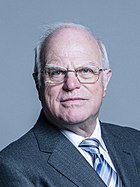| |||||||||||||||||||||||||||||||||||||||||||||||||||||||||||||||||||||||||||||||||||||||||||||||||||||||||||||||||||||
25 London Assembly Seats 13 seats needed for majority | |||||||||||||||||||||||||||||||||||||||||||||||||||||||||||||||||||||||||||||||||||||||||||||||||||||||||||||||||||||
|---|---|---|---|---|---|---|---|---|---|---|---|---|---|---|---|---|---|---|---|---|---|---|---|---|---|---|---|---|---|---|---|---|---|---|---|---|---|---|---|---|---|---|---|---|---|---|---|---|---|---|---|---|---|---|---|---|---|---|---|---|---|---|---|---|---|---|---|---|---|---|---|---|---|---|---|---|---|---|---|---|---|---|---|---|---|---|---|---|---|---|---|---|---|---|---|---|---|---|---|---|---|---|---|---|---|---|---|---|---|---|---|---|---|---|---|---|---|
| |||||||||||||||||||||||||||||||||||||||||||||||||||||||||||||||||||||||||||||||||||||||||||||||||||||||||||||||||||||
An election to the Assembly of London took place on 10 June 2004, along with the 2004 London mayoral election.
The Assembly is elected by the Additional Member System. There are fourteen directly elected constituencies, nine of which were won by the Conservatives and five by the Labour Party. An additional eleven members were allocated by a London wide top-up vote, with the proviso that parties must win at least 5% of the vote to qualify for list seats. This latter rule prevented both the British National Party and the Respect Party from winning a seat each as both fell just short of the 5% threshold.
This election saw losses for Labour and the Greens and gains for both the Liberal Democrats and UKIP, who achieved their first representation in the Assembly since its creation in 2000.
- ^ "London Assembly Member Bob Neill". london.gov.uk. Archived from the original on 5 August 2004. Retrieved 7 October 2019.
- ^ "London Assembly Member Toby Harris". london.gov.uk. Archived from the original on 4 June 2004. Retrieved 7 October 2019.
- ^ "London Assembly Member Graham Tope". london.gov.uk. Archived from the original on 28 June 2004. Retrieved 7 October 2019.
- ^ Not the incumbent, but stood in this seat and won.






